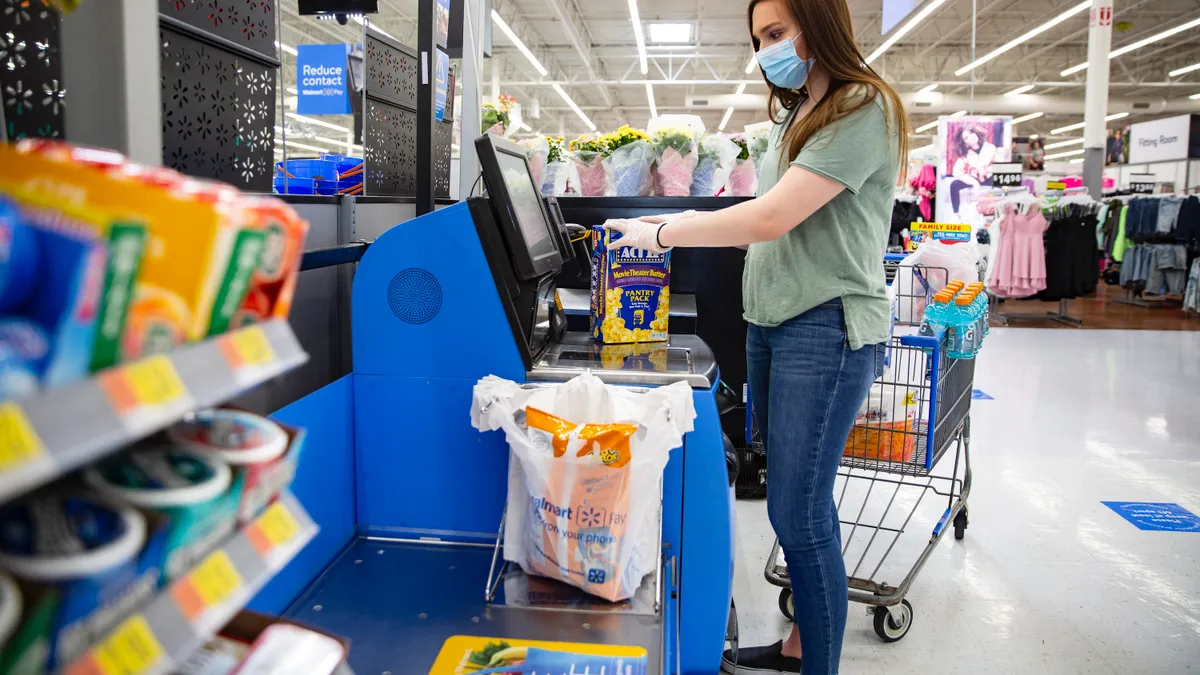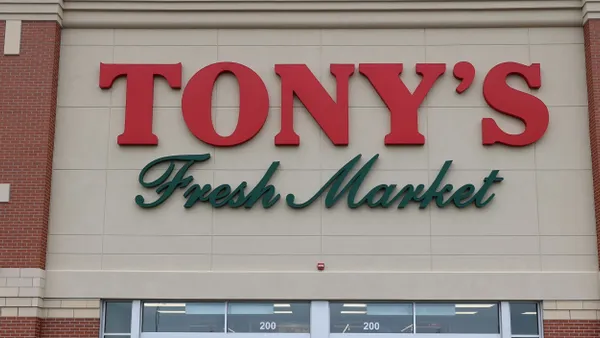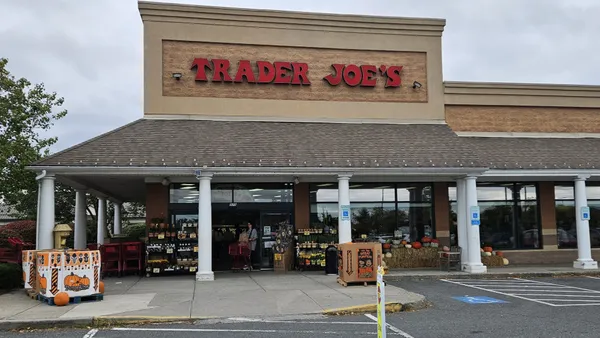Dive Brief:
- More than three in four consumers are confident that the food they are eating is safe during the pandemic, according to a survey of 1,000 consumers done by the International Food Information Council between May 7 and 12. Close to the same percentage said they are confident that manufacturers can produce enough food to meet consumers' needs while much of the nation is primarily eating food made at home.
- More than a third of consumers — 36% — are buying more packaged foods than usual. This is slightly less than the 42% who were purchasing more when IFIC did a similar survey in April. The same amount of consumers — 36% — are purchasing the same amount of packaged food as usual. Nearly a quarter — 22% — are buying less packaged food. Since the pandemic started impacting consumers, 33% say they have a more favorable opinion of packaged foods' safety.
- In May, more consumers said they are making themselves feel safe at the grocery store by wearing masks while shopping, shopping online, paying for food with cards instead of cash, using self checkout machines and buying more packaged food than in April. Fewer consumers are washing their hands after shopping, trying to touch fewer surfaces and using wipes and sanitizer than last month.
Dive Insight:
As Americans are agitating to get back to normal life after about two months of being mostly homebound, they are slowly changing their shopping behaviors.
Consumers were in prime pantry stocking mode as offices, schools, restaurant dining rooms and retailers started closing in mid-March. According to Nielsen statistics, sales skyrocketed for many nonperishable staples, including canned goods, dried beans and powdered milk. U.S. Census Bureau data shows grocery stores rang up $72.6 trillion in sales in March.
In April, those sales slowed down. While Census Bureau figures show grocery stores saw sales of $63.3 trillion — 13.4% more than in April 2019 — they had fallen nearly 13% from March's peak.
While consumers seem to be more focused now on shopping for immediate food needs, they are adopting new habits. Rediscovering packaged food is one of them. In March, Credit Suisse predicted packaged food could see its sales jump by nearly 30% during the pandemic. Earnings reports and interim filings from publicly traded food companies have largely proven these projections to be accurate. Bank of America analysts wrote that between mid-March and mid-April, Campbell Soup, Conagra Brands, General Mills and Kraft Heinz all saw sales bumps of nearly 25% or more above the same period in 2019. Frozen food is also a big winner, with seven in 10 consumers purchasing more during the pandemic, and half saying they will continue buying more of it after the outbreak subsides, according to a study from the American Frozen Food Institute.
Trust in those foods — and their safety and nutritional value — goes hand-in-hand with more purchases. Scientists have said it is highly unlikely that coronavirus is spread through food. The number of recalls and potential foodborne illness outbreaks — which would have nothing to do with the pandemic — have been low in recent months, according to the government agencies tracking them. This reinforces the positive consumer sentiment, and makes consumers ultimately more likely to retain these foods as part of their normal routine.
And Big Food, which was falling out of favor with consumers who viewed products as overly processed and less healthy, may have also made inroads. About 43% of participants in the IFIC survey said they are eating healthier now than they were before the pandemic. The same amount said they were eating as healthily now as before. While consumers could be exaggerating their healthy choices in the survey, they could also be realizing items made by major manufacturers actually could be good for them. Improving products' health profile has been a major goal of manufacturers, 98% of which have recently reformulated products — mostly to cut back on salt and sugar, according to the Consumer Goods Forum.
Prior to the pandemic, the biggest food companies had not been posting the best financial results, as consumer trust and desire for their products slipped. The pandemic appears to be closing that gap between what consumers said they wanted and what the food companies provided.














